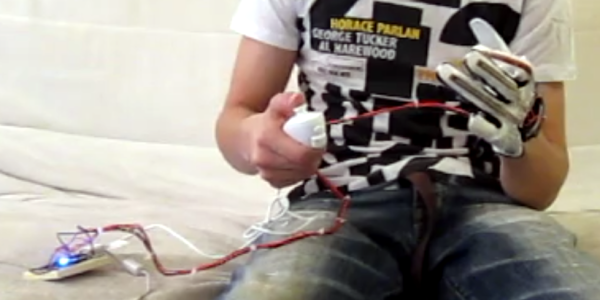[Shu Uesugi] is filling a controller void that Nintendo has yet to address. He picked up a golf glove from Target and incorporated it into an air guitar interface. Give the video after the break a chance, you’ll start to see the full potential of this build about three and a half minutes into it. Using an Arduino, a Wii nun-chuck, and his flex-senor adorned glove [Shu] can play individual notes, strum cords, and play around with sound effects such as distortion.
So come on Nintendo, the Power Glove was one of your greatest ideas, where’s our 21st century version? I guess we’ll just have to make our own like [Shu] did. Perhaps we’ll even build our flex sensors from scratch.


















